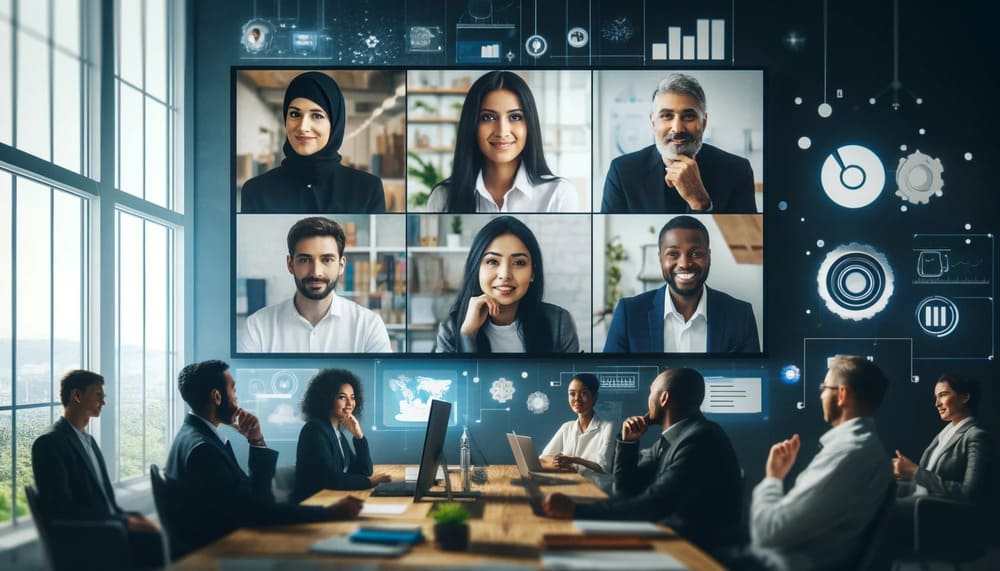At any given moment in time, our brains are tasked with evaluating billions of bytes of information. Because of this, they have evolved to take shortcuts. Known as heuristics, these mental beelines inform our responses based upon data we’ve aggregated in the past.
While these cognitive express lanes can be useful tools in certain situations, they can be problematic in others. This is particularly true when they lead us to make assumptions about people based upon the way they look, dress or speak. Also known as stereotypes, preconceived notions such as these can lead to hostile work environments, decreased job satisfaction, and limited career advancement opportunities in the workplace.
Here, we’ll take a look at some of the ways AI is being used to counter stereotypes in business.
What Are Stereotypes?
In the simplest terms, stereotypes entail the categorization of individuals based upon their perceived ethnicities, cultural mores, ages, genders or sexual orientations. In the workplace, these biases can manifest themselves as assumptions about work ethic, competence (or lack thereof) and communication skills. This can lead to flawed decision-making among managers and others who influence the hiring, promotion, and retention of traditionally marginalized groups.
Stereotypes can also have a negative effect on workplace dynamics as people are forced to overcome assumptions about their leadership abilities, grace under pressure, propensity to cope with change, or levels of expertise. When we engage in these responses, often without seeming to realize we’re doing so, we are experiencing unconscious bias.
Fortunately, AI can help counter unconscious bias.


Prioritizing Call Center AI Solutions
Framework call center leaders can use to prioritize which AI solutions to implement first
AI-Informed Hiring Decisions
Advanced HR teams are now using AI to evaluate job descriptions and review resumes. They are also employing the tech to identify traits, skills and behaviors in order to match candidates with open positions. Additionally, the technology is being deployed to scan job reviews for biased language to ensure workers are evaluated based upon their performances—rather than any unconscious biases a manager may hold.
According to a Stanford University white paper, companies employing AI to remove race, gender, and national origin from the initial evaluation process has resulted in broader diversity among candidates. The report cites a marked increase in diversity among hires as well. The paper posits that hiding the attributes of applicants that could give rise to biased assumptions, the possibility of discrimination on this basis is removed.
Avoiding Biases in Advertising With AI
The X_Sterotype platform, developed by Larry Adams, a former Warner Brothers executive, is capable of analyzing scripts for commercials and ad copy to detect clichés and stereotypes. In doing so, the platform is helping brands connect with more diverse customer bases. The tool is currently being used by Procter & Gamble, Chipotle Mexican Grill, and 3M.
In an interview with Bloomberg, Thyme Hill, chief marketing officer at Bob Evans Foods recounts a situation in which the platform determined one of the proposed characters in a commercial they were producing was likely to be seen as too racially ambiguous. She says that would have diluted the perceived diversity of the spot and ruined the image they were trying to portray.
Improving Customer Service Outcomes with AI
Along with the rise in the numbers of offshore customer service call centers has come an increase in customer dissatisfaction. Callers, when confronted with accents different than their own, make certain assumptions about the agents on the other end of the lines. “Foreign” sounding people are often presumed to be less competent, leading callers to ask to speak to managers, rather than trusting the reps to resolve their concerns.
Tomato.ai’s platform softens offshore accents, while preserving the natural voices of customer service reps. This makes it easier for callers to understand what they are saying, which instills them with more confidence in the capabilities of the representative. Further, because the Tomato.ai algorithm works quickly, real time exchanges are supported, making conversations feel more natural. Call centers deploying the technology are reporting vastly improved customer service results, which in turn generates more customer loyalty (and profitability) for the companies they represent.
In Summary
These are just a few of the ways AI is countering stereotypes in business settings. By working to circumvent the potential for unconscious bias in hiring, marketing and customer service, AI is improving outcomes in a number of different ways. Companies are hiring better-qualified individuals, producing advertisements that speak to a wider range of consumers and experiencing improved customer satisfaction—all of which serve to improve their bottom lines.




